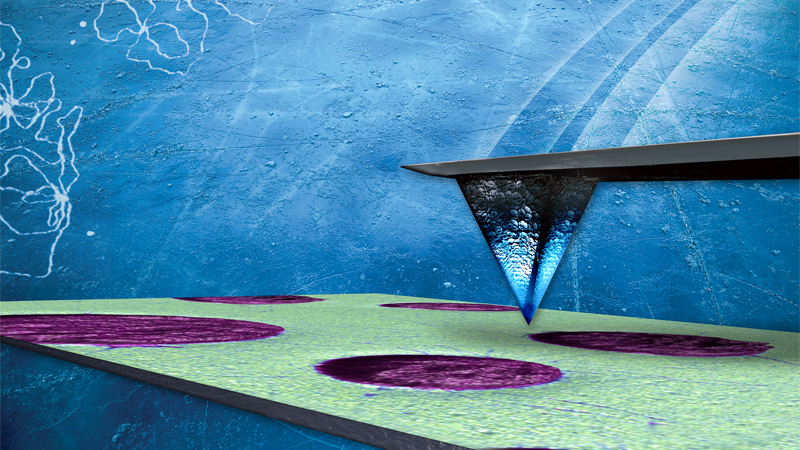Electrochemical Scanning Tunneling Microscopy (EC-STM)
EC‑STM is STM in an electrochemical (EC) cell with a four‑electrode setup (two working electrodes, a reference electrode, and a counter electrode). This enables in‑situ topographic and electrical imaging of electrode surfaces during EC experiments, as well as current versus distance or current versus voltage spectrum collection to measure local conductivity, work function, or density of electronic states.
EC‑STM uses the tunneling current under a bias between a (semi)conducting sample and a conducting tip for distance control and feedback. The tip, which is coated with an insulating layer to expose only the very end, can be scanned in constant current mode (with feedback control) or in constant height mode (feedback switched off). Current‑distance and I‑V spectroscopy is also possible. An EC fluid cell used for EC‑STM contains the tip and sample as working electrodes plus (typically) an additional quasi‑reference and counter electrode, connected to a bipotentiostat. By using this EC cell, in‑situ studies are made possible under EC control and in volatile solvents.
EC‑STM is particularly useful for characterization of metallic layers, molecular adsorbates, electrochemically active species, and catalytic sites, as well as high‑resolution atomic‑ or molecular‑scale imaging of electrochemical processes on a conductive sample. It can also be used to dynamically track deposition/stripping processes or conformational changes.
